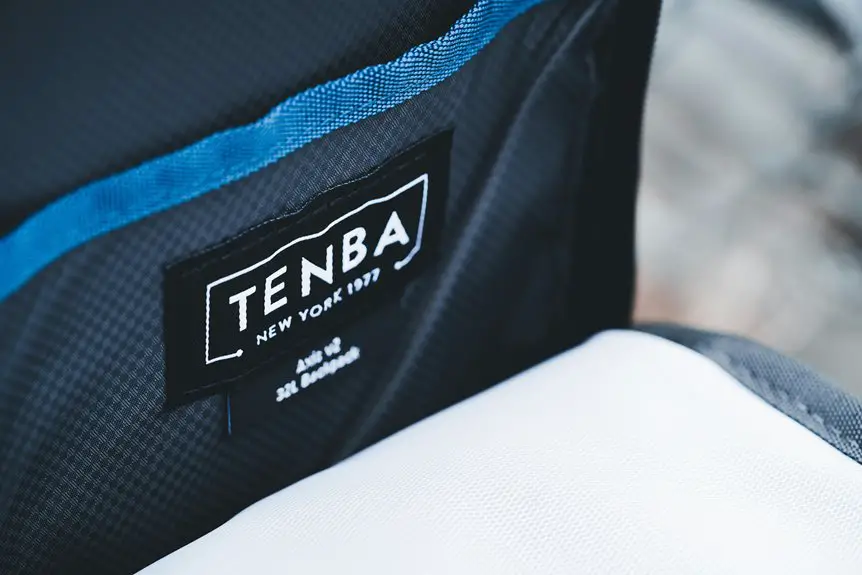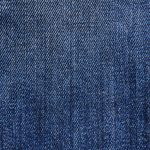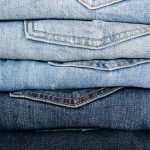When evaluating velvet fabric quality, you’ll want to check its fiber content—natural fibers like silk feel luxurious, while synthetic blends boost durability. Look for a dense, tight weave and even pile length for a smooth, plush texture. Fabric weight matters too: heavier velvet lasts longer, lighter velvet drapes nicely. Colorfast dyes and special coatings protect against fading and stains. These markers guarantee a balance of softness and strength, and there’s more to explore about what makes velvet truly exceptional.
Table of Contents
Key Takeaways
- Examine fiber content; natural fibers like silk add softness, while synthetic blends improve durability and strength.
- Check weave density and thread count; higher counts yield a more luxurious, durable velvet.
- Assess pile length and texture for evenness, smoothness, and consistent sheen indicating quality.
- Evaluate fabric weight and thickness to match project needs for durability, warmth, and drape.
- Verify colorfastness and presence of protective coatings to ensure vibrant color retention and stain resistance.
Understanding Fiber Content in Velvet
Fiber content plays an essential role in determining the quality and feel of velvet fabric. When you pick velvet, you’ll notice that natural fibers like silk or cotton offer softness and breathability, making the fabric feel luxurious against your skin.
Silk velvet, for example, boasts a shiny surface and smooth texture, while cotton velvet feels more matte but remains comfortable.
Silk velvet shines with smooth elegance, while cotton velvet offers a soft, matte comfort.
On the other hand, synthetic fibers such as polyester or nylon provide durability and resistance to wear, which means your velvet can maintain its look longer under frequent use.
Blends of natural and synthetic fibers often balance softness and strength, giving you velvet that’s both elegant and practical.
Knowing the fiber content helps you choose velvet suited to your needs and preferences.
Importance of Weave Density and Construction
You’ll notice the thread count plays a big role in how dense and durable velvet feels.
The tightness of the weave directly affects the fabric’s texture and strength.
Understanding different construction techniques helps you choose velvet that holds up well and looks great over time.
Thread Count Impact
When evaluating velvet fabric, thread count plays an essential role in determining its quality. A higher thread count usually means the fabric is denser, offering better durability and a more luxurious feel. It influences the fabric’s texture, weight, and resilience to wear and tear.
You’ll want to take into account these factors when choosing velvet for upholstery, clothing, or accessories.
Here’s what thread count affects in velvet:
- Softness and smoothness of the surface
- Resistance to pilling and fraying
- Overall fabric strength and longevity
- Appearance of the pile and richness of color
- Comfort and drape when worn or used
Understanding thread count helps you select velvet that balances durability with elegance.
Weave Tightness Effects
Thread count sets the foundation for velvet’s quality, but the weave tightness further shapes its feel and durability. When the weave is tight, the fabric feels smoother and resists wear better, giving you a luxurious touch that lasts. Looser weaves might feel softer initially but tend to wear out faster and show signs of pilling.
Here’s how weave tightness influences velvet:
| Weave Density | Effect on Velvet |
|---|---|
| Tight | Enhanced durability, smooth feel |
| Medium | Balanced softness and strength |
| Loose | Softer but less durable |
Construction Techniques Benefits
Although weave density plays a crucial role in velvet’s quality, the overall construction technique determines how well the fabric performs over time.
When you understand the benefits of advanced construction methods, you can better appreciate velvet that lasts and looks luxurious.
High-quality velvet often comes from precise weaving and finishing processes that enhance durability and texture.
Here’s what you should look for:
- Consistent pile height for uniform appearance
- Double weaving techniques to increase strength
- Use of high-twist yarns for resilience
- Proper tension control to avoid distortion
- Specialized finishing treatments for softness and sheen
Evaluating the Pile Length and Texture
Pile length and texture play an essential role in determining velvet’s overall quality and feel.
When evaluating pile length, you want to look for consistency—longer piles often feel plusher, but if they’re uneven, the fabric might wear out faster. Run your fingers over the surface; it should feel smooth and luxurious without any rough or patchy areas.
Texture tells you about the fabric’s construction and softness. High-quality velvet usually has a dense, even texture that reflects light beautifully, giving it that rich sheen. Avoid velvet with a coarse or stiff texture, as it’s less comfortable and may indicate lower-quality fibers or poor craftsmanship.
Assessing Fabric Weight and Thickness
After feeling the texture and length of the velvet, you’ll want to contemplate its weight and thickness to understand its durability and suitability for your needs.
Heavier and thicker velvet usually signals a more robust fabric, ideal for upholstery or winter clothing. Lighter velvet, meanwhile, offers a softer drape, perfect for garments requiring fluidity.
To assess weight and thickness effectively:
- Hold the fabric up to the light to gauge density.
- Feel the fabric’s heft in your hand; heavier feels more substantial.
- Compare thickness by folding the fabric and noting bulk.
- Check for consistent thickness across the fabric’s surface.
- Consider your project’s requirements for warmth, durability, and drape.
Colorfastness and Dye Quality Indicators
You’ll want to check how well velvet holds its color through testing fabric color retention.
Understanding the types of dyes used can tell you a lot about the fabric’s quality.
Also, pay attention to how washing affects the color, as this reveals the dye’s durability.
Testing Fabric Color Retention
Although velvet’s rich colors often catch your eye first, testing fabric color retention is essential to guarantee those hues stay vibrant over time.
You want velvet that resists fading through washing, sunlight, and everyday use. To evaluate colorfastness effectively, consider these key indicators:
- Exposure to sunlight without noticeable fading
- Resistance to color bleeding during washing
- Stability of dye under rubbing or abrasion
- Consistency of color across different fabric sections
- Performance after exposure to perspiration or moisture
Types of Dyes Used
Understanding how velvet holds its color leads naturally to the types of dyes used in its production. When you evaluate velvet, pay attention to the dye type because it directly impacts colorfastness and overall quality.
Reactive dyes bond chemically with fibers, offering vibrant hues and excellent resistance to fading. Acid dyes, commonly used for silk velvet, provide rich colors but may require careful care to maintain brightness.
Direct dyes are less durable and prone to washing out, so avoid velvet dyed this way if you want longevity. High-quality velvet often features fiber-reactive or acid dyes, signaling durability and luxury.
Effects of Washing on Color
When you wash velvet, the way its color holds up reveals a lot about the fabric’s dye quality and overall durability. High-quality velvet maintains vibrant color without bleeding or fading, showing excellent colorfastness.
Poor dye application or low-quality dyes cause dullness, uneven fading, or color transfer after washing. To assess this, watch for:
- Minimal color bleeding in wash water
- Even color retention across the fabric
- Resistance to fading after multiple washes
- Absence of dye transfer to other clothes
- Consistency in texture and sheen alongside color
Signs of Durable Finishing and Treatments
Since velvet undergoes various finishing processes, you can tell a lot about its durability by checking the quality of these treatments.
Look for a smooth, even surface without sticky or overly stiff spots—that signals well-applied finishing. Durable velvet often has a protective coating that resists pilling and maintains softness after wear. You can gently rub the fabric to see if the pile recovers quickly, indicating strong treatments.
A smooth, even surface and quick pile recovery indicate well-finished, durable velvet fabric.
Also, check for consistent color and sheen; uneven fading or dull patches suggest poor finishing. High-quality velvet resists water spots and stains, thanks to durable treatments that repel liquids.
When shopping, ask about any special coatings or treatments applied, as these enhance longevity and maintain the fabric’s luxurious feel over time.
Frequently Asked Questions
How Should I Care for Velvet to Maintain Its Quality?
You should gently vacuum or brush velvet to remove dust, avoid direct sunlight to prevent fading, spot clean spills immediately, and use professional cleaning for deep stains. Always store velvet items in a cool, dry place.
What Are the Best Cleaning Methods for Velvet Fabric?
Cleaning velvet is like handling a delicate flower; you’ll want to gently vacuum or spot clean with mild detergent. Avoid soaking it, and if in doubt, trust a professional dry cleaner to keep it looking plush and vibrant.
Can Velvet Fabric Be Used for Outdoor Furniture?
You shouldn’t use velvet fabric for outdoor furniture because it’s delicate and absorbs moisture easily. Instead, choose specially treated outdoor fabrics that resist weather, fading, and mildew to keep your furniture looking great outside.
How Does Velvet Compare to Other Luxury Fabrics in Price?
Velvet usually costs more than many luxury fabrics because of its complex weaving process and rich texture. You’ll find it pricier than silk or satin, but sometimes less expensive than high-end leather or cashmere.
Are There Sustainable or Eco-Friendly Velvet Options Available?
You can find sustainable velvet made from organic cotton, bamboo, or recycled fibers. These eco-friendly options reduce environmental impact while still offering that luxurious feel you want. Look for certifications to guarantee true sustainability.
- What Is Pima Cotton Percale? A Premium Bedding Option - July 14, 2025
- What Does “Percale Sheet” Mean? A Simple Definition - July 14, 2025
- Do Cotton Percale Sheets Contain Polyester? How to Read the Label - July 14, 2025







